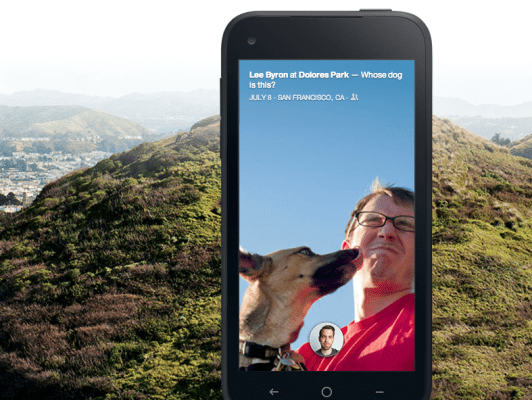An app on a smartphone is a limited vessel, one that can provide content and information for your audience, but within bounds set out by the operating system. People still have to navigate to your app, and therefore there’s a time when they’re “in” your product or service, and a time when they’re “out” of said product or service. Facebook clearly demonstrated last week that it wants to own that distinction, and it’s sure to propel others to see if they can’t do the same.
Facebook Home reverses the natural order of things on mobile devices compared to what has existed to date: A user actually starts off in Facebook, and then has access to a launcher which can take them “out” of the social network (though not truly out) and into Android proper, from which they can access other apps. The social networking company says that the whole idea of Facebook Home is to put people first, but the business motivation behind it is actually to put Facebook first.
The chart Facebook used to illustrate how Facebook Home operates and compares to other tools like true Android OS modifications and apps (it’s a layer sandwiched between the core OS and apps that run on top, Facebook says) is a perfect example of why it’s a desirable state of affairs for FB — as well as for others looking to derive more value from mobile users who tend to be more focused on doing one thing at a time and who can also pick and choose how they want to share with a service more readily thanks to the ease of integrating mobile SDKs and APIs into other people’s software.
In general, companies trying to move their model from a primarily web-based one to a version that starts on mobile first are experiencing growing pains, specifically around finding ways to convert the advertising model to be as effective on smaller screens and in an app-centric context. Facebook Home isn’t starting out with ads, but Facebook CEO Mark Zuckerberg strongly indicated they’d make their way to Cover Feed down the road, which means they’ll occupy prime real estate on the main interface of FB’s Android launcher.
On Android, the opportunity is there for anyone with development resources, time and motivation to build their own launcher, which sits between the OS itself and apps, in many ways directing the experience of the user. Any company with a suite of services it wants to promote for sharing or communication would be well-served by occupying that space on a user’s device: it doesn’t take much imagination to conceptualize an Evernote phone, for instance, or even a GetGlue tablet, or yes, a Twitter phone, too.
To imagine that a user might want to give over control of most of the experience of their devices to a single service or app-making company is more than a little egotistical, which is why Facebook with over 1 billion monthly active users seems perhaps justified in attempting it. Others with smaller networks might seem a little more ridiculous attempting the same, but if you can convince enough users to hand over the keys to their mobile experience, presumably, the initial risk will be well worth it in the long run.
